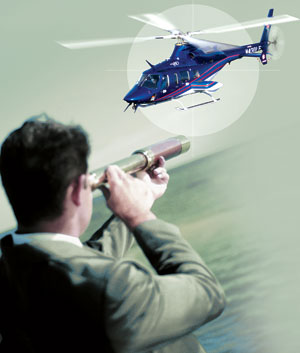Helicopter – Refocus & Realign
While the versatility and flexibility of a helicopter are attributes that need to be exploited, its unplanned use can well become a bane for safe operations

The recent accident that claimed the lives of Andhra Pradesh Chief Minister Dr Rajasekhara Reddy along with two officials and two pilots has once again raised concerns over safety in civil helicopter operations. In India, accidents involving helicopters with VIPs onboard are occurring with disconcerting frequency. To compound the problem, recommendations of the investigating committees related to the enhancement of safety in helicopter operations have regrettably remained either partially implemented, postponed or have just withered away on account of inadequacy of infrastructure, lack of onboard modern radio navigation systems or absence of proper directives from the government, even as vital issues tend to get clouded in the maze of bureaucracy.
Helicopter operations are in great demand, especially during national and state elections. These events generate high density traffic with and without VIPs. There is a need, therefore, to refocus on some of the safety issue involved in helicopter operations.
Better Safe than Hurry
The helicopter is an extremely versatile platform, able to operate from unprepared surfaces and confined areas. The minimum requirement is a cleared area with a level and hard surface, as also approach and exit path free of obstacles such as tall trees or power cables. In the aftermath of the September 2 crash that killed Dr Reddy, a question has arisen as to whether a VIP passenger could pressure the pilot into taking avoidable risks, especially in bad weather. During election time when the intensity of flying is high, pilots have occasionally not been able locate unmarked make-shift helipads in remote areas on account of erroneous coordinates, lack of modern avionics onboard and absence of ground-based navigation aids. There are also other issues that need to be addressed for safer helicopter operations.
Proper maintenance of the helicopter is an essential prerequisite to ensure its airworthiness. While this aspect needs to be reviewed periodically by the regulatory authorities, it is understood that the Directorate General of Civil Aviation (DGCA) is woefully short of qualified personnel to undertake the task of regular inspection of the 250-odd civil registered helicopters operating in the country. It is important to ensure that the helicopters fly with the least number of technical concessions. More so because helicopters carry out most of their flying off base during elections and undertake frequent short distance flights.
Unlike for fixed-wing aircraft, which operate from airports, maintenance facilities for helicopters are not available at remote helipads. The only solution in case of a serious technical problem would then be to dispatch spares and experts by another helicopter.
Quality Maintenance Matters
Onboard equipment such as weather radar, communication systems and navigational aids, including Global Positioning System (GPS), must be fully serviceable and with adequate redundancy. This is the responsibility of the operating agency, maintenance and operating crew. Concessions or shortcuts encourage carelessness and indifference in this regard can lead to problems. As spares have to be procured from sources abroad and are expensive, operating agencies may at times continue to operate the machine with large number of concessions. Occasionally, pilots too cooperate with the management and ignore this aspect under a misplaced notion of loyalty to the company or to satisfy individual egos.
The weather radar must be fully serviceable especially because the helicopter is not an ideal platform to negotiate thick clouds and heavy rain. With a weather radar, it is possible to skirt areas covered with thick clouding. Unlike fixed-wing aircraft, a helicopter does not have the capability to climb to heights to fly above clouds. Helicopters, therefore, normally fly below the clouds. However, high obstacles along the route, if not noticed, can result in a catastrophe. This probably was the cause of the September 2 crash.
Easy Communication & Navigation
Two way radio communication with helicopters operating at low level in remote areas in an inescapable necessity. Following the September 2 accident, there is a proposal for providing satellite phones for VIP operations. Preferably it should be a standard fit on all helicopters as lives are precious, VIP or otherwise.
Apart from Very/Ultra High Frequency Radio Telephony sets, helicopters should have High Frequency (HF) communication facility as this has much longer range and it is possible to establish two way communications even when the helicopter is on the ground. Indian Air Force (IAF) helicopters operating in the Himalayas or over thick and inaccessible jungles of the Congo, have found HF communication systems useful.
State governments need to earmark open fields in cities and towns, preferably in proximity of police stations to serve as makeshift helipads. There is also a need to catalogue all the helipads indicating the size of the helipad and the precise coordinates as obtained from GPS to facilitate easy navigation. Other data should include availability of fire-fighting services, windsock, obstacles and ground and/or air communications as well as refuelling and security arrangements. In the IAF, apart from data on helipads, photographs and video films of helipads are provided to the pilots to enhance safety. A digital copy of such compilation should be provided to all the operators.





